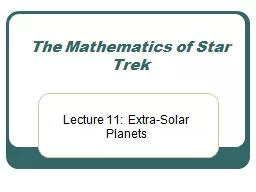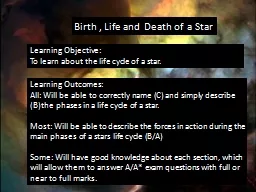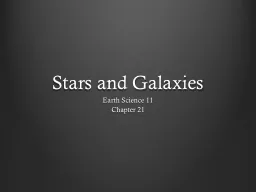PPT-Star Gazing
Author : karlyn-bohler | Published Date : 2016-04-26
March 2012 History For all agricultural people from the past the knowledge of heaven was fundamental Its observation allowed them to calculate the precise timing
Presentation Embed Code
Download Presentation
Download Presentation The PPT/PDF document "Star Gazing" is the property of its rightful owner. Permission is granted to download and print the materials on this website for personal, non-commercial use only, and to display it on your personal computer provided you do not modify the materials and that you retain all copyright notices contained in the materials. By downloading content from our website, you accept the terms of this agreement.
Star Gazing: Transcript
Download Rules Of Document
"Star Gazing"The content belongs to its owner. You may download and print it for personal use, without modification, and keep all copyright notices. By downloading, you agree to these terms.
Related Documents














![[eBOOK]-Star Gazing: A Disguised Password Book With Tabs to Protect Your Usernames, Passwords](https://thumbs.docslides.com/982589/ebook-star-gazing-a-disguised-password-book-with-tabs-to-protect-your-usernames-passwords-and-other-internet-login-information-6-x-9-inches-disguised-password-books.jpg)